Improve your Visual Social Media
How to get better results from the pictures you post on Instagram.
This post is an ever growing collection of tips and insights to help you craft better images for your Instagram and Pinterest, as well as pictures on Twitter, Facebook and elsewhere online.
Reshaping the African Arts Narrative in the Age of Social Media
The arts establishment is confronted with a new generation of creatives that are spending less time in galleries and more time in newsfeeds. Is this the end of art as we know it?
As the demand for diversity that recognises Africa’s innate prowess grows, so too does the market for art that reflects and evokes it.
The arts establishment is confronted with a new generation of creatives that are spending less time in galleries and more time in newsfeeds. Is this the end of art as we know it?
Past is Prologue
Plaque (detail): Equestrian Oba and Attendants, Edo peoples (Benin Kingdom), 1550–1680, brass, H. 19 7/16 x W. 16 1/2 x D. 4 1/2 in. /49.5 x 41.9 x 11.4 cm (The Metropolitan Museum of Art)
From as far back as 77 000 years ago, African kingdoms have been wielding their natural bounties of precious metals, clay, fibres and other materials into some of the world’s oldest forms of art. From royal brass plaques that flanked the Benin Empire to The Divine Golden Stool of the Asante Nation in Northern Africa; and from narrative Khoisan paintings to the Shona people’s stone sanctuaries in Southern Africa, there is no single standard, aesthetic or function for African art.
One can, however, identify common threads that informed the development of art among the continent’s diverse kingdoms: themes that wove through the spiritual, the maternal and the natural (to name just a few). Accompanied by folklore, performance and orature as essential forms of storytelling, art throughout Africa has arguably been championing mixed media before mixed-media was a thing.
Fast-forward 77 000 years: “African Art” is doomed. That is, animal skins and tribal-everything - some of the products of a centuries-old perception of Africa as a ‘country’ of raw material and unrefined society - are swiftly being overturned by art produced by African artists, for Africa, at a globally competitive scale. One of the immediate functions of art being produced in Africa today is the reclamation of African heritage, beauty and life itself.
Bringing this closer to home
Three South African artists provide important insights into how commercial, ideological and social success can be achieved with their practices and today’s technology.
Atang Tshikare is a street-artist, illustrator and maker with creativity passed down to him from his father and grandfather, and a business brain from his mother (as he puts it). The result: Zabalazaa - which means “to hustle” - a studio and platform for artists and makers to collaborate, experiment and break with convention. As an artist, Atang does not fit into a single category or lean on a particular medium. Instead, his practice is guided by colour, utility and collaboration. As a commercial venture, such fluidity might seem like a recipe for instability. However, Tshikare’s career is on an upward trajectory both globally and locally through design exhibitions, magazine features and the occasional global news spot.
image: zabalazaa.co
As his art business grows, his roots sink deeper into the soil from which his talents came. Atang has recently started offering apprenticeships for young people with motivation but limited means. Offering a constructive space for youth who find themselves with few mentors or exposure to art as a viable profession is an endeavour that Atang does not consider extraordinary, but has indirectly contributed to a culture of art and business as spaces of learning too. He’s not alone in this thinking either.
Kent Lingeveldt grew up in the Cape Flats and has built a career as a photographer, skateboard-shaper and professional skateboarder. At the heart of his business, Alpha Longboards, is a deeply personal love for skateboarding itself, as well as the opportunity to make high-quality handcrafted skateboards to a global market.
Image: alphalongboards.com
Kent grew up skateboarding, a sport which exposed him to a new way of seeing the world. Public benches became obstacle courses, and this experience lent itself easily to photography with a refreshing perspective. Collaborations with other local artists are key to Alpha Longboard’s commercial and artistic development, whilst social development informs Kent’s entire philosophy. Making art that is both locally made (from local materials) and functional as a tool for youth cultural development is another example of art and business reinforcing its roots. This is a localised model that travels well too. Alpha longboards and skating workshops have made their way as far afield as Bremen, Germany, in part thanks to Cape Town’s booming tourism industry and professional skateboarding’s global culture.
- Buhle Ngaba is an actress, director and author of the recently released e-book, Girl Without A Sound. The book is her latest creative project, a distinct departure from performance and theatre, but consistent with her personal passion for instilling self-confidence in young, black girls. What began as a concept shared on Facebook with a relative, turned into a stream of pre-orders for a book that hadn’t even been written.
Image: girlwithoutasound.com
Recognising a real need but lacking in multimedia resources, Buhle teamed up with an illustrator, photographer, web designer and media expert, among others, to produce a collaborative work of literary art. Designed to impact the lives of young girls across South Africa, Girl Without A Sound was made available in two languages, free to download and will soon be turned into a hardcopy book. The response to the book has been overwhelmingly positive, with an expertly coordinated digital and traditional media launch.
Moving seamlessly between digital and traditional, and soft and hard copy, are key component of successful scaling within South Africa, where equal access to ICT infrastructure is still a significant barrier for digital art and media.
What do Tshikare, Lingeveldt and Ngaba have in common?
Each artist occupies a space as a black, African artist in an art world with an historically, predominantly anti-black narrative. This presents a significant barrier to the nature of art produced - art that might censor itself in order to sell. However, these artists are not waiting for that narrative to change. They are reshaping it - not purely out of commercial or artistic pursuit, but out of a deep-rooted social imperative. In doing so, each artist has created their own market.
Three key philosophies underscore the work of these three artists:
The deeply personal can be a catalyst for the professional. Part of the beauty of art is that it is expected to be personal. Part of the tragedy of business is that it is not. These artists prove that cultivating a passion into a profession is possible, even with limited resources and know-how.
Both art and the business of art can be socially conscious by nature. Giving back is less of a nice-to-have than it is an imperative for artists who have had to overcome systemic challenges.
Local is global. By combining context, personal heritage and an explicit focus on using local material, localised products resonate much more with global markets. Finding the global niche or subculture into which one’s art fits or supports is another common element, as Alpha Longboards does for the global skateboarding community.
Two practices thread their respective practices together: Collaboration and Word-of-Mouth.
In an age where everyone and anyone can be an artist, a maker or a writer thanks to tools like Instagram, MakerBots and Medium, professional artists need to work creatively in order to stay creatively revved up and still pay bills.
Through a culture of collaboration with other artists, Atang, Kent and Buhle reflect the collectivist values inherent in African society - values that suggest that if we all help each other, we all benefit.
By promoting work chiefly through dedicated networks of supporters such as friends, collaborators and friends of collaborators, these artists demonstrate the enduring value of word-of-mouth and relationship-building with people first, and digital networks as a “natural” byproduct. The result is an enduring network of earned media - the kind that sees all businesses stretch to loveable brands in order to achieve.
One things is increasingly evident: Art and Education may soon be redundant concepts.
South African Free-Wifi Hero Calls for #Internet4all
“I believe that internet access should be a basic right, it should be viewed as another utility, much the same as water, or electricity.” - Alan Knott-Craig
Alan Knott-Craig Jnr, Founder of Hero Telecoms
“Should internet access be a basic right?” Alan Knott-Craig Jnr asks in response to whether or not he believes in the notion of #internet4all in Africa. The serial telecomms entrepreneur laughs out loud, and then asks: “What do you think?”
For the past four years, Knott-Craig Jnr’s key purpose has been all about trying to realise the dream that everyone in this country has a basic right to access an internet connection that is affordable, reliable and of good quality.
It started in 2012 when he was the CEO of Mxit, and made a deal with the Stellenbosch municipality to enable free WiFi access in public spaces. The effort was organised under the moniker ‘Project Isizwe’, and its biggest installation today, has been in Tshwane, although Knott-Craig reveals that Johannesburg is next.
“In the last two years, Tshwane has become the continent’s biggest free public WiFi network,” Knott-Craig Jnr says. “I believe that internet access should be a basic right, it should be viewed as another utility, much the same as water, or electricity.”
“There are so very many reasons internet access should be a basic right, but aside from education, healthcare or finding out what the Guptas are up to, for me the most compelling motivation for #internet4all in South Africa is economic development,” he says.
“We see it in all the roll-outs we’ve done. Free or affordable access to the internet sparks economic development. Whether it’s as simple as someone going online to look for a job to start earning money, or listing their newly opened hair salon on Gumtree, people use the internet to access the economy. There’s a WiFi spot in Pretoria that now has a guy selling hot dogs alongside it, the free internet access brings loads of footfall, and the guy sells his buns with viennas in,” Knott-Craig Jnr says with a laugh.
“There’s a much cited statistic that was put out by the World Bank about the growth effect of broadband, and I’ve seen it in Tshwane. Enable the access and everything flows from there,” he says. That frequently referenced World Bank study found that for each 10% increase in broadband penetration in low and middle-income countries, there was a GDP rise of 1.38%.
Knott-Craig Jnr’s call, for internet access to be considered a basic right in South Africa, follows the advocacy by Elsie Kanza, Head of Africa and Member of the Executive Committee for the World Economic Forum who is championing internet for all on the continent.
“Technology has already helped to bring about vast improvements in the way the region governs, feeds, lives, educates, trades and interacts with itself,” said Kanza.
Over 1,000 Global Shapers in 94 cities across Africa have joined the an #internet4all in Africa campaign to advocate for internet access as a basic right at the World Economic Forum on Africa 2016, taking place in Kigali, Rwanda, from May 11 to 13. “We believe that, in the 21st century, this essential infrastructure should be available to everybody,” Kanza says, adding: “All Africans want is the chance to create for themselves the future that they deserve.”
“The reason I approached the government and asked them to start rolling out free WiFi in public spaces and poor communities, is because the telcos are never going to make internet access free. It is not their game, and they’ll never make it cheap enough for someone to not worry about how much they’re spending on data. It’s just not going to happen,” Knott-Craig Jnr says.
In Tshwane the Free Public WiFi project, Knott-Craig Jnr says, was driven by the metro’s mayor, Kgosientso Ramokgopa. “He pushed for the idea that the internet should be a basic service like water and electricity. Ramokgopa and his team are the people who made it happen.” The statistics of the Tshwane network point to its pervasive popularity.
The Jacaranda city’s free public WiFi network has had 1.4 million unique devices connected to it, with average speeds of some 15Mb per second. “It’s not like crappy dial-up -- it sometimes bursts to 30 Mbps,” Knott-Craig Jnr says. The network has 776 sites in public spaces and is available 24/7.
“If you drive to some of the installations in Tshwane, you’ll see people randomly standing in parking lots staring at their smartphone, or sitting in a park, eyes fixed on their laptop screen. The city people who use it call it Sputla WiFi after the mayor, his name is Kgosientso ‘Sputla’ Ramokgopa, Sputla is his nickname,” Knott-Craig Jnr explains, and adds: “The youth love it. It’s a major political win, particularly in a local government election year.”
The feedback from ‘Sputla’ WiFi users is that they now refuse to go to town hall meetings to see how city administration is going down. The Mayor has obliged with an offering called WiFi TV, where once a week a young journalist in Mamelodi interviews His Worship with questions the mod squad have submitted during the week.
And then there’s the narrative of the people who use the service. Mrs Mabhena, a librarian at Eldoraigne Community Library in Pretoria, says people sit outside the library premises for hours. “There is this particular old lady who comes to use the Free WiFi to call her
daughter in Australia,” Mabhena says, adding: “With access to information, anybody can become anything.”
This is true for 21-year-old Mukundwa Ratshikhopa from Rooihuiskraal, Centurion who started his own business on the back of the free WiFi. Mukundwa has an emerging branding company and uses the access for downloading and uploading images, and to update software programs.
Then there’s Ikageng Mashaba from Itsoseng who is starting out in the music industry as a composer and producer. “I’m always uploading my tracks on iTunes, YouTube and other platforms. I have my own record label so I use WiFi for admin and I communicate with artists and co-workers. Tshwane Free WiFi has been very helpful.”
Jerry Matabula promotes his beauty business, the New Deal JR Salon, while 20-something Nosi Nukwa uses the service to supplement her learning. A poignant story comes from Molebogeng, who is unemployed and used to have to save R100 to go to an internet cafe to browse online and try to find a job. Now he’s at the public WiFi daily to look for opportunities.
For Knott-Craig Jnr the big dream is to put internet access within walking distance of everyone who needs it. In Tshwane that dream is becoming real. “The idea is this -- if you can’t afford to get on the internet, we’re not going to put fibre or copper into your house, but we’ll make sure you can walk from your house to the nearest WiFi zone. By 2018 our promise is that every citizen in Tshwane will be in walking distance of free WiFi. Today we already have 23.4% of the buildings within walking distance of free wifi. Pretty cool, eh?”
Pretty cool indeed. Pervasive, free WiFi in public areas for people who need it the most is a no brainer, particularly when one looks at SA’s economic outlook and unemployment figures.
-------------------------------------------------------------------------------------------------
Sign the Project Isizwe petition to call on government to provide free WiFi access in public spaces: http://petition.isizwe.com/
Do you think #internet4all would change your life, your work, or the lives of the people on this continent? Support the idea of #internet4all in Africa by taking to Twitter, Facebook, Instagram, or YouTube and motivating why #internet4all needs to be on the development agenda. Follow @Internet_4All
Support the call for #internet4all
Ahead of the World Economic Forum on Africa that takes place in Kigali, Rwanda, from May 11 to 13, 2016 Elsie Kanza announces that over 1,000 Global Shapers in 94 cities across Africa will launch the #internet4all in Africa campaign to advocate for internet access as a basic right.
The World Economic Forum calls for #Internet4all
“What would an ecosystem capable of supporting a smarter Africa look like?” Elsie Kanza, Head of Africa and Member of the Executive Committee for the World Economic Forum asks this Thursday 07 April 2016 in a piece headlined "Only 20% of Africans use the internet – we must fix this digital poverty now".
In the article, Kanza details a series of ground-breaking tech innovations from Africa that proves that Africa’s greatest resource is its people. “Technology has already helped to bring about vast improvements in the way the region governs, feeds, lives, educates, trades and interacts with itself,” says Kanza, the former personal assistant and economic advisor to Jakaya Kikwete, the fourth President of Tanzania.
Ahead of the World Economic Forum on Africa that takes place in Kigali, Rwanda, from May 11 to 13, Kanza announces that over 1,000 Global Shapers in 94 cities across Africa will launch the #internet4all in Africa campaign to advocate for internet access as a basic right.
“We believe that, in the 21st century, this essential infrastructure should be available to everybody,” Kanza says, adding: “All Africans want is the chance to create for themselves the future that they deserve.”
South African Educational Technology Leaders Join the Call
In Cape Town, teacher-cum-internet access champion and entrepreneur Luvuyo Rani is fully behind the idea of #internet4all. Through his business - which takes internet access, computing and technology into emerging and rural communities - Rani has repeatedly seen how access changes people’s future and life.
“What we see in our stores is that people come in with their smartphones but don’t know how to use them, because they are used to only working on feature phones. We help them create Facebook accounts and an email account, and to register for WhatsApp. This literally changes their lives. Being connected means they can interact with friends and relatives regardless of where these people are. They can connect their businesses and they can look for schools or education opportunities. They can even access their banking. Just like water or air or food or the need for safety, a home or family, the internet is a need that should be placed within Maslow’s Hierarchy of needs.”
Meanwhile in Johannesburg, Andrew Barrett, Education activist and co-founder of the academic support non-profit, Olico, also supports the call for #internet4all
“A lack of access to the internet creates additional barriers to educational growth and to potential development, there is no question about that,” says Barrett, who advocates that internet access in Africa should be a basic right. “The internet is an important enabler for all kinds of factors including education and academic development, but also for growing one’s awareness of your position as a global citizen.”
Olico’s materials and online learning system could revolutionise South Africa’s dysfunctional education system, and improve the lives of many learners, but only if those learners have internet in order to access the open source content.
“Access to freely and readily available information is important to your place in the world, as well as to deciding what you want to do in the future. As more and more high quality open source material becomes available, access to the internet will be the great leveller in many ways,” he explains.
Andrew Rudge, CEO of The Reach Trust, agrees. “#Internet4All is one of the most important policy decisions we can take, because it is about giving individuals the power to make life-altering choices without a dependency on a traditional system. It is about a very real, life-altering freedom.”
This is not just talk, The Reach Trust, has helped more than 10 million people transform their lives through access to free education, health and counselling services on their mobile phones. Their recently launched LevelUp application even incentivises learners with vouchers that they can use to purchase groceries at South African retailer Shoprite.
We are only at the beginning of the #internet4all movement. The first 30% of Africans have gotten connected to the internet, and already miracles are happening. When we are all connected, there will be unimaginable opportunity for us all.
Please support this campaign by adding your voice - take to Twitter, Facebook, Instagram, YouTube or any other social media of your choice to explain why the #internet4all is a conversation we need to be having with our leaders.
The Way We Measure Online Ads is Ruining the Internet
The most used metric for the reach of online ads, CPM (Cost Per Thousand Impressions) is completely and utterly broken and sits at the foundation of possibly one of the biggest con jobs in the history of modern economics, says media entrepreneur Tinus Le Roux.
The most used metric for the reach of online ads, CPM (Cost Per Thousand Impressions) is completely and utterly broken and sits at the foundation of possibly one of the biggest con jobs in the history of modern economics.
A journey into the world of Digital Marketing Metrics
It’s July 2014 and I’m shown into a board room on the top floor of One Coca-Cola Plaza in downtown Atlanta. I make an awkward joke about the ‘secret formula’ while I prepare to discuss the results of the four College Football Fancams we produced for Coke Zero the previous year.
The digital innovations team is excited. They took a chance on this guy with the weird South African accent and it turned out to be a massive success.
Thousands of fans spent an inordinate amount of time on the Coke Zero branded Fancams, they shared the content through their social networks, entered sweepstakes, watched the videos and did everything you want them to do in a successful digital campaign. This is what you could call "deep engagement". We were thrilled!
So, now it’s time to go big and the innovations team has organised a number of meetings with “different stakeholders to discuss our results and see how it could help them achieve their KPI’s”.
As a bit of background: My company, FanCam, captures super-high-res 360 degree images of cities and stadiums that are so detailed that people can go and find a picture of themselves and tag it on Facebook. This is a screen-capture of a SuperBowl FanCam.
After showing them the cool pictures, I dive straight into the numbers:
“For our Auburn Fancam we generated 120 000 pageviews, 90% of which were unique users, 68% on their mobile devices and an average time on site of 5 minutes per user. We captured 5 000 email addresses and identified the top 20 influencers at the school. Our...”
“That’s not particularly good,” interrupts one of the smartest guys on the social team.
I’m caught completely off guard and there is palpable discomfort in the brief silence that follows.
“One tweet from @CocaCola delivers more impressions than that and it doesn’t cost us a cent.”
He goes on to explain that they recently ran a Twitter campaign that delivered a billion impressions.
I’m completely stumped and I suddenly feel very, very far away from home. I thought our results were good. No, I know our results are good, but I have no comeback. A billion is a hell of a big number!
I deflect with a half decent, “I’d love to schedule a separate meeting so that the two of us can dive into the numbers a bit more,” and quickly put our Super Bowl Fancam on the projector to bring balance to the force, but my internal ‘non compute’ signs are flashing like crazy. I needed to discover the value of an impression to find out if I still had a business.
What I learned was so surprising but yet made complete sense. I'll start with the basics and we'll go from there.
Your Time Online is not Accounted For
To state the obvious, that free content you’re consuming every day, is paid for by advertisers. You’re not paying to see those holiday pics on Facebook because Facebook is getting paid by advertisers to display ads alongside them. Your news is free for the same reason and so is Pinterest and Twitter and Gmail and Bing and almost everything else. This is how the internet works.
Your attention is worth money and in exchange for it, you get subsidised content. It’s a great deal!
Where it gets interesting however is how your attention is measured and paid for:
The metric of the day is the CPM (Cost Per Mille) or simply put, “cost per a thousand impressions served”. Google, Twitter, Tumblr, Youtube and almost every other company providing you with free content is getting paid on a CPM basis. It’s the metric that makes the internet free.
It’s also completely and utterly broken and sits at the foundation of possibly one of the biggest con jobs in the history of modern economics.
The CPM Delusion
In 2014, advertisers bought $50B worth of impressions in the United States alone. That’s enough money to pay the full tuition fees of half the country's college students.
There is a problem however, in late 2014 Google reported that 56% of the ads bought in this way were never displayed in front of human eyes. You need to read that again.: Never displayed in front of human eyes. Not “never seen”. NEVER SHOWN. 56%.
How is this possible?
Well, the part about that CPM definition you (and many advertisers) missed, is the little word at the end: ‘served’. While it would be reasonable to assume that when you pay $20 CPM, you would reach a thousand people, that is not what ‘impressions served’ means. ‘Impressions served’ means, a server ran a program displaying your ad somewhere - not necessarily in front of a human.
It could be on a part of the page nobody ever visited or it could be on a screen in a dark room somewhere, but the assumption that you reached a 1 000 potential customers with your 20 bucks is very, very wrong.
But wait, it gets worse… The 44% of ‘good display ads’ in the aforementioned Google stat are described as “viewable ads”, but that doesn't mean they were actually viewed. In fact, the IAB definition of ‘viewable’ is that only half of that ad needed to be displayed on a screen for one second to count as an impression. That’s right: half of a banner ad appearing at the bottom of your screen for one second is deemed enough for you to have viewed that banner ad, read its message and pay attention to it. All while you’re actually busy paying attention to the content on the site.
So what does Google say about how many ads were displayed in full for 3 to 5 seconds? Well, Google doesn’t say anything. Convenient? If you’re selling banner ads at CPM, sure. So let’s do some napkin math here:
I spent $20 CPM and hoped to have 1 000 potential consumers pay attention to my ad. In my case, I’d like them to see my whole ad and have it in their field of view for 5 seconds, at least. Let’s look at the numbers
I pay for 1000 impressions (this is the 'M' in CPM). Google says 56% never reached a screen. That leaves us with 44% of 1 000. That's 440 impressions left. Considering that an ad needed half of its pixels displayed for 1 second to get into this ‘good bucket’, let’s be conservative and assume 10% of these ‘viewable’ ads had the whole ad in front of a human for 5 seconds. That gives us 44 impressions. Let’s say you pay attention to 10% of the banner ads actually displayed on your screen for 5 seconds or longer (do you??). We all know it’s less, but we can give CPM the benefit of the doubt here... That leaves us with 4.4 actual meaningful "impressions". Okay, so rounded up that brings us to 5 effective impressions for $20.
That’s $4 per viewed banner ad or in other words $4 000 effective CPM. And here’s the kicker, you're paying $4 000 CPM for something that consumers actively hate (see ad blockers) and will almost always find itself alongside another banner ad, diminishing what value there was even further.
Measuring consumer attention on a CPM basis make absolutely no sense to anyone - except those selling it.
“If this is true,” I hear an imaginary executive in Madison Avenue ask, “why have display ad budgets been increasing year over year and why aren’t they showing any signs of slowing down, smart ass?”
Dear “soon to be unemployed executive,”, two reasons:
One - Nobody is incentivised to rock the boat:
Brands? Nope. As long as that guy in the board room in Atlanta can tell his boss he delivered a BILLION impressions, he sounds like it’s worth having him around - and as long as Pepsi is reporting to deliver 2 Billion he has no incentive to report in any other way.
Agencies? Hell no! They earn commission on the $50B. Media sellers like Google, Facebook, Twitter? Not now, they’re busy printing CPM money.
Two - There has been no alternative mainstream metric to measure attention in the digital context.
So what has changed?
The Accountants are coming.
Despite all the hype, big brand digital marketers have had difficulty linking views and impressions to actual sales. Upper funnel awareness and target market lift was used to justify buying banner ads on ESPN’s home page, without having to report on the ROI delivered. In fact, Pepsi and Diet Pepsi lost 5% market share the year they went fully digital in their advertising. (Long read on this: How the Mad Men Lost the Plot).
CFO’s had to stand back because they weren’t paid to understand the dark art of advertising, they were there to make the numbers work. Problem is, advertising has become a numbers game and the accountants are smarting up. The most asked question in marketing is becoming: what's the ROI of that?
Against all wisdom, these accountants have been allowed to have Facebook and Twitter accounts and you can bet your bottom audited dollar there’s at least one CFO out there who has looked skeptically at the thousands of impressions delivered by that picture he shared off his calculator. Add their traditional distrust of CMO’s and the fact that Google admits 56% of the banner ads bought were never seen and you can be sure they’ll soon be asking some serious ROI questions in those budget allocation meetings.
Short version: If numbers people start asking serious questions about CPM, marketing people are going to struggle to justify their spend and will need to find more common sense metrics to do so.
There’s another player who is going to drive this change though - and it’s just as unlikely a hero as the accountants. Introducing good old print media. These guys are backed up in a corner, battered and desperate. They hate the impression economy, they just don’t know it by that name... yet!
How is it possible that a listicle on Buzzfeed has more value than a New York Times article? In the impression economy, where all impressions are equal and the time and quality of the attention is not measured, the listicle is worth more than the article.
In the attention economy however, the time on site, intensity of attention and the profile of the target audience have the potential to help the NY Times sell their attention at a higher rate.
The Financial Times (accountants + newspaper) have already made the switch. Since 2014, they’ve stopped selling ads on a CPM basis and have brought in CPH (cost per hour) as a more sensible replacement.
The sales pitch basically goes like this: “Who wants 500 hours of attention of CEO’s in Germany?” A number of brands signed up and the FT has reported that they’re really happy with the initial results. Why? Because it makes sense to smart advertisers.
Which brings us to an alternative metric to measure attention in the digital space.
Let me try and explain with a real world example to illustrate the difference between an impression and actual attention.
My wife is going away for the weekend. I’m in charge of our 3 boys aged 8, 6 and a terrible 2. Just before she heads out of the door she reminds me that our son Jean needs to be at his cricket match at 9am, Tian’s medication has been measured out, and I should not ‘accidentally’ leave Petri at the park.
“Are you paying attention?” she asks as I scroll through my Twitter feed on the phone.
In the impression economy I can answer with a resounding, confident and truthful, “Yes”. I have indeed registered her as an impression. I am definitely aware that she is there and that she is saying … something. In the real world, however, I’m about to get my ass kicked.
Humans don’t live in the impression economy, we live in the attention economy and my dearest wife knows this. She also knows (as should all advertisers) that she requires a certain type of attention for the communication to be effective.
“Have you been listening to all I have been saying?”, comes the follow up. In other words: Did you listen from start to finish (time) and did you do so without reading tweets (intensity)? This is how you measure attention in the real world. Not by registering an ‘impression’.
There is a third attention metric: knowing if you’re capturing the attention of the appropriate target audience, but I hope my wife never asks that question.
Marital bliss aside, how do we apply the fundamentals of the attention economy to digital advertising?
Well, we start by measuring attention in a way that makes sense.
Enter Dominic Good, advertising sales director at the Financial Times, explaining the sense behind their recent switch from CPM to CPH.
“While CPM values every impression the same, CPH uses time to measure value. The FT has shown through extensive testing that brand familiarity and recollection among readers increases significantly the longer an ad is in view. Adverts seen for five seconds or more on FT.com show up to 50% higher brand recall and familiarity than ads that are visible for a shorter period of time.”
He is echoed by Twitter co-founder and founder at Medium, Ev Williams: “We pay more attention to time spent reading than number of visitors at Medium, because in a world of infinite content—where there are a million shiny attention-grabbing objects a touch away and notifications coming in constantly—it’s meaningful when someone is actually spending time,”
“After all, for a currency to be valuable, it has to be scarce.”
And that is the beauty of the attention economy right there, scarcity.
See, you can copy, paste and serve as many banner ads as you like, but human attention is a limited resource. It’s a function of the number of humans in your target audience and the number of hours they have available to pay attention to your brand. It really is that simple.
The future
Imagine a world where we admit to the reality that attention is a limited, valuable and diminishing resource. This is a world where “attention holding” is more valuable than “attention grabbing”.
Where CMO’s focus on tactics that will allow them to capture as many of those minutes for as little money as possible. Where real world principles are used to judge the effectiveness of digital marketing campaigns.
No more wasteful spending on ineffective, unseen banner ads.
No more slideshow websites to generate more impressions.
Instead, more money for innovation and high quality content and serious questions about what consumers care about (pay attention to).
By the way, we had our follow-up meeting with that smart Coca Cola team and ended up doing another 20 games for Coke Zero (even more successful than the first ones) but those couple of awkward minutes on the 29th floor of One Coca-Cola Plaza, put me on a path to try and understand the world of digital marketing metrics - and it’s been a wild ride.
This is the Moneyball of marketing and everything is about to change - again.
#CPMmustFall
The South African Digital Context
How many people are using the internet and key online and social media platforms in South Africa.
This is an always up-to-date resource where we will share the latest stats pertaining to how people are using the web in South Africa. We draw this insight from a number of credible resources, including our own direct research where reliable secondary data isn't available.
South African Social Media Users
- WhatsApp: 16,4 million
- Facebook: 12 million
- Youtube: 8,6 million
- Twitter: 7.4 million
- LinkedIn: 4.1 million
- Instagram: 2.7 million
- Pinterest: 840 thousand
- Snapchat: 312 thousand
References:
- WhatsApp via: WeAreSocial report stating 31% of South Africans are on WhatsApp, Jan 2015
- Facebook via: Facebook reveals user numbers for South Africa, September 2015
- YouTube, Twitter, and Instagram via Fuseware & WorldWideWorx, September 2015
- LinkedIn source, direct from LinkedIn, October 2015
- For Snapchat figure see http://www.statista.com/statistics/326445/leading-snapchat-market/ - puts it at 2% of mobile internet users. Mobile internet users = ±92% of total web users have a smartphone (via IAB + Effective Measure SA Mobile Report)
Most downloaded apps in South Africa, as of December 2015
Useful resources:
- IAB SA website user data
- South African Internet Map (explore the top websites in SA by category)
- The Memeburn guide to the South African ad agency landscape
- MyBroadband: What people in the SA digital industry earn
Smartphone Users
via http://www.slideshare.net/kleinerperkins/internet-trends-v1?ref=http://www.kpcb.com/internet-trends
That's it for now. We will keep this page up to date, and keep adding to the stats here. So if data is your thing, please bookmark this page and keep returning. And if you gained some value from this, please take a moment to share the URL with anyone else who might also benefit.
Online Advertising revenue in South Africa for 2015:
Search: R865 million
Online Display Advertising: R566 million
Source: PwC report. See more at Memeburn
The Social Campaign Canvas
The Social Campaign Canvas helps you conceptualise a high interest announcement or event on social media that delivers measurable business or campaign value.
The social campaign canvas one-page framework that coaches you through 9 considerations to create an event on social media that gets noticed and delivers business value.
This post explains how the canvas works, and at the end you can click a button to download the .pdf to print out and use.
The Pillars
Dynamics
- Business Purpose corresponds with Content Conversion - i.e How do you ensure your content delivers on your business objective.
- Your Partners need to correspond with the Community - Partners give you access to your community, can give your credibility in that community, and help you with messaging and concept for the community.
- Your Values need to be expressed clearly in the creative Concept, this gives emotional consistency and depth to the campaign.
- Your Message is what you want to say, the Topic is what people are interested in talking about. Ultimately, you need to combine the two to ensure your message gets through in a way that's interesting a relevant.
- And at the centre of the canvas are your Audience. The reason we're doing the campaign is to get them to act, and so everything on the canvas should relate to them and what is most likely to work.
Working with the Canvas
Related Content
Book this Class
Google's 8 Habits of Effective Managers
Google's “people analytics” team conducted research to discover the roles and behaviours of the most effective managers at Google. These were distilled into 8 habits, and shared in Lazlo Bock's 2015 book "Work Rules!"
In 2002 Google tried to create a completely flat organisation - they got rid of managers, in an attempt to remove barriers to collaboration and rapid idea development. What the realised very quickly was that this approach achieved the opposite - decisions bottlenecked and chaos almost ensued.
This sparked an internal research project to discover the qualities of outstanding management at Google. After analyzing reams of data consisting of performance reviews, surveys, feedback and interviews, statisticians zeroed in on 8 key qualities, ranked in importance.
1. Be a good coach
- Provide specific, constructive feedback, balancing the negative and the positive.
- Have regular one-on-ones, presenting solutions to problems tailored to your employees’ specific strengths.
2. Empower your team and don’t micromanage
- Balance giving freedom to your employees, while still being available for advice. Make “stretch” assignments to help the team tackle big problems.
3. Express interest in team members’ success and personal well-being
- Get to know your employees as people, with lives outside of work.
- Make new members of your team feel welcome and help ease their transition
4. Don’t be a sissy: Be productive and results-oriented
- Focus on what employees want the team to achieve and how they can help achieve it.
- Help the team prioritize work and use seniority to remove roadblocks.
5. Be a good communicator and listen to your team
- Communication is two-way: you both listen and share information.
- Hold all-hands meetings and be straightforward about the messages and goals of the team. Help the team connect the dots.
- Encourage open dialogue and listen to the issues and concerns of your employees.
6. Help your employees with career development
7. Have a clear vision and strategy for the team
- Even in the midst of turmoil, keep the team focused on goals and strategy.
- Involve the team in setting and evolving the team’s vision and making progress toward it.
8. Have key technical skills so you can help advise the team
- Roll up your sleeves and conduct work side by side with the team, when needed.
- Understand the specific challenges of the work.
Three counter-productive behaviours to effective management
1. Have trouble making a transition to the team
- Sometimes, fantastic individual contributors are promoted to managers without the necessary skills to lead people.
- People hired from outside the organization don’t always understand the unique aspects of managing at Google.
2. Lack a consistent approach to performance management and career development
- Don’t help employees understand how these work at Google and doesn’t coach them on their options to develop and stretch.
- Not proactive, waits for the employee to come to them.
3. Spend too little time managing and communicating
Further reading on this...
Conducting a Customer Interview for Product and Marketing Insight
Doing a customer interview is one of the most efficient ways to gain insight to develop your product or the way you market it.
Doing a customer interview is one of the most efficient ways to gain insight to develop your product or the way you market it.
You book an appointment to meet a customer for 30 - 60 minutes, preferably not someone you know already but who would represent a real potential buyer of your product or service. The purpose of the interview is to try and understand if the problem you are trying to solve with your product is a problem the customer actually has. That's the problem validation or problem finding part of the interview. You also want to gain useful insight into how the customer buys your kinds of products or services, and how you can fit in with that (or improve that experience for them), and then talking pricing. A bonus is if you actually get an order, but that certainly isn't the point.
Following are two useful documents to help you get going on your first customer interviews.
Download the homework sheet for this assignment. The questions from this

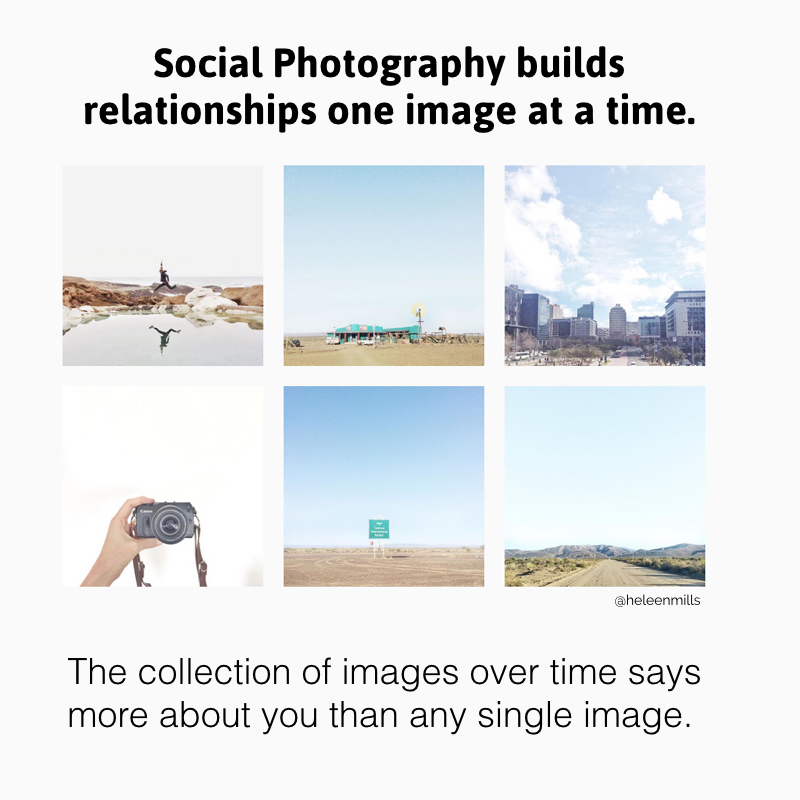


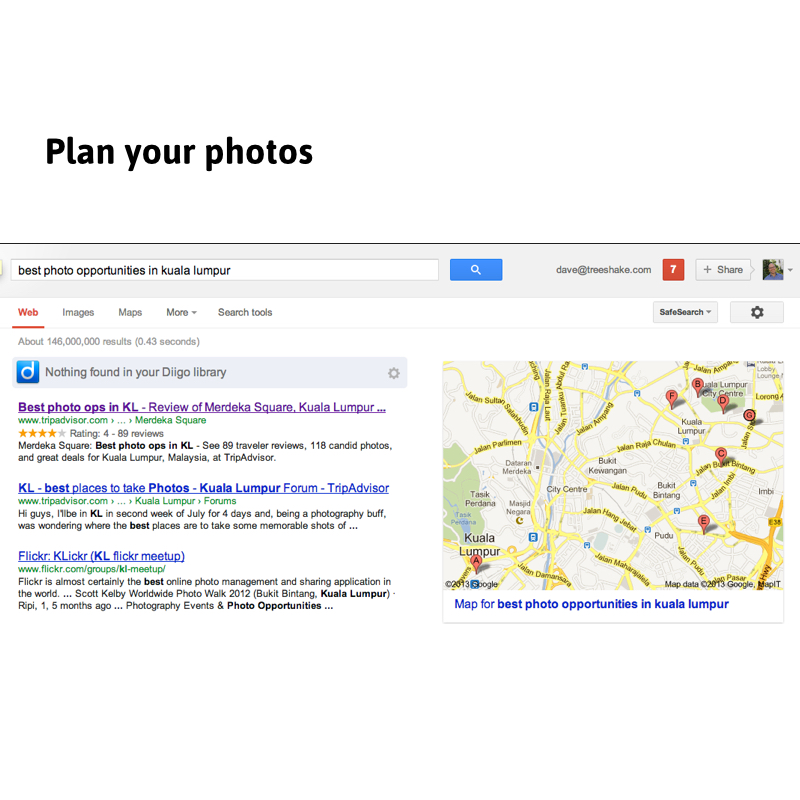

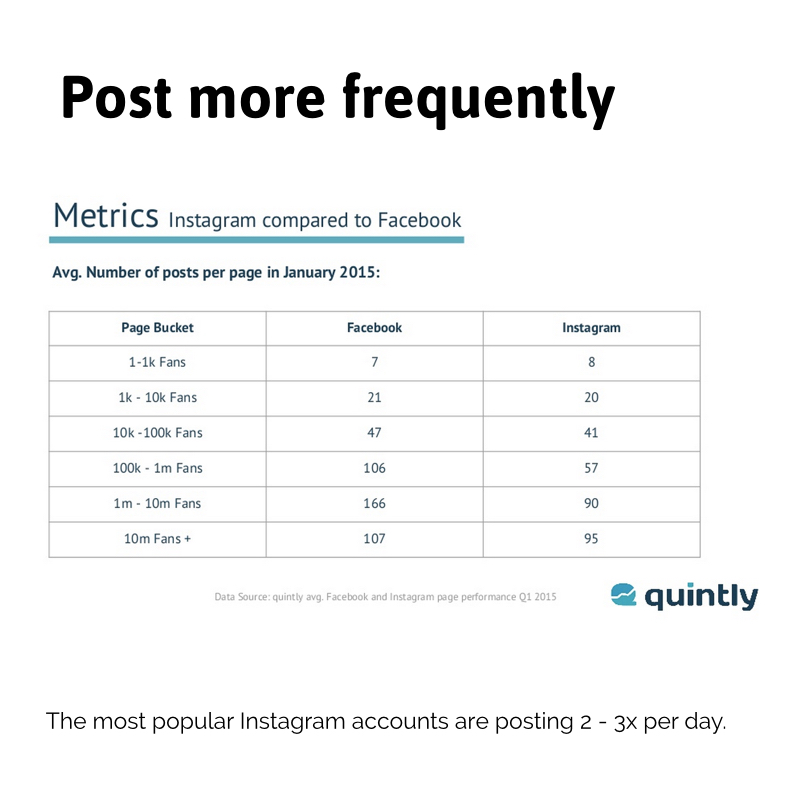
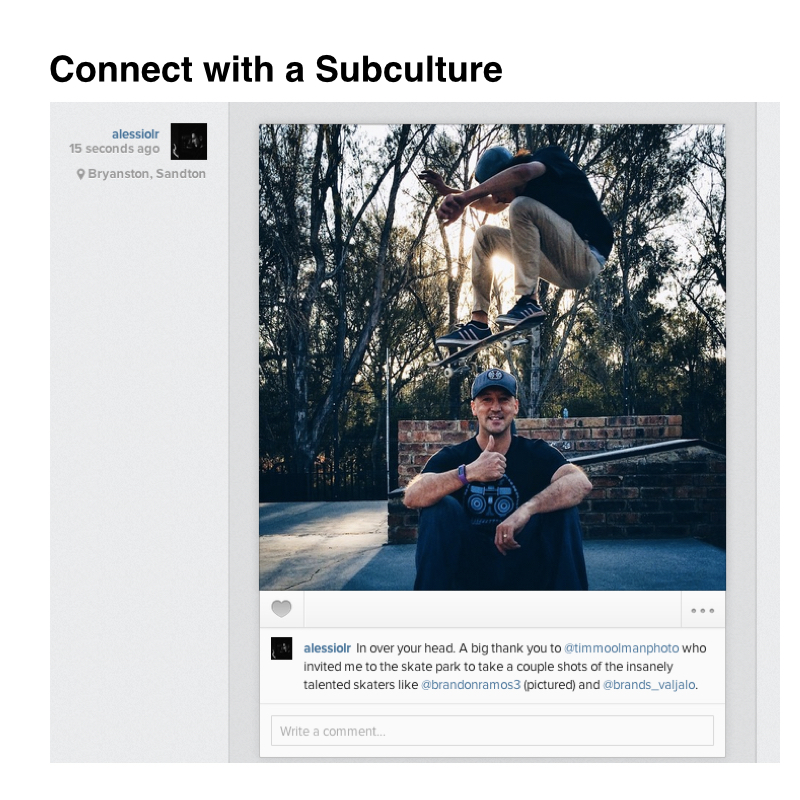
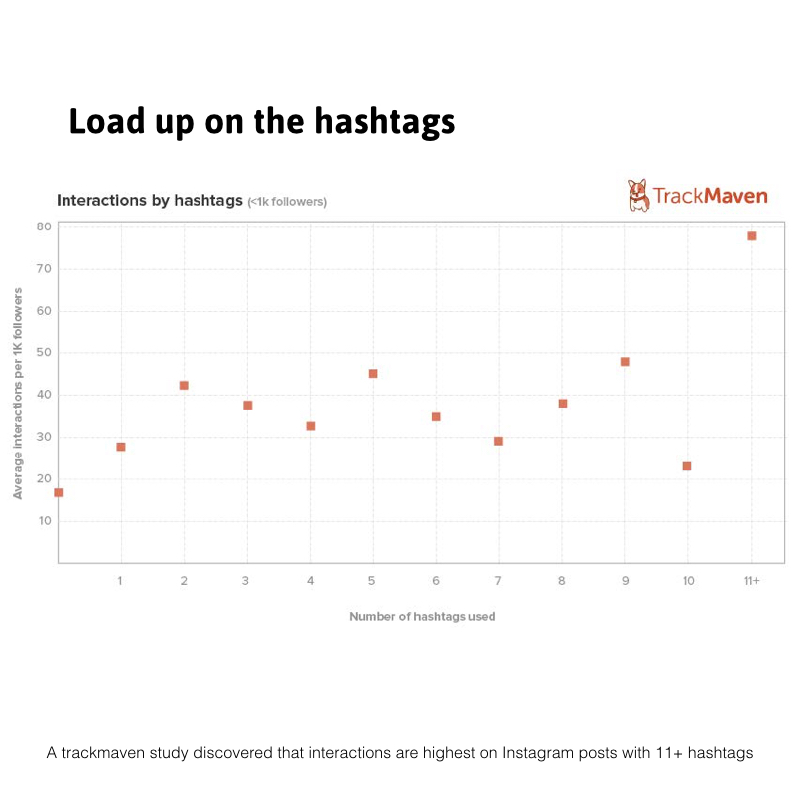
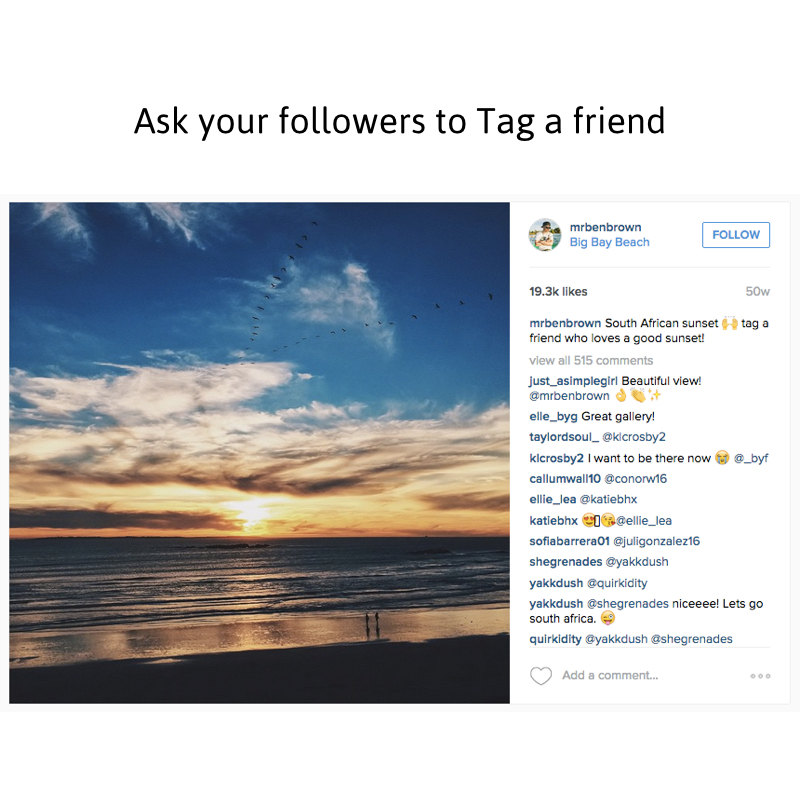
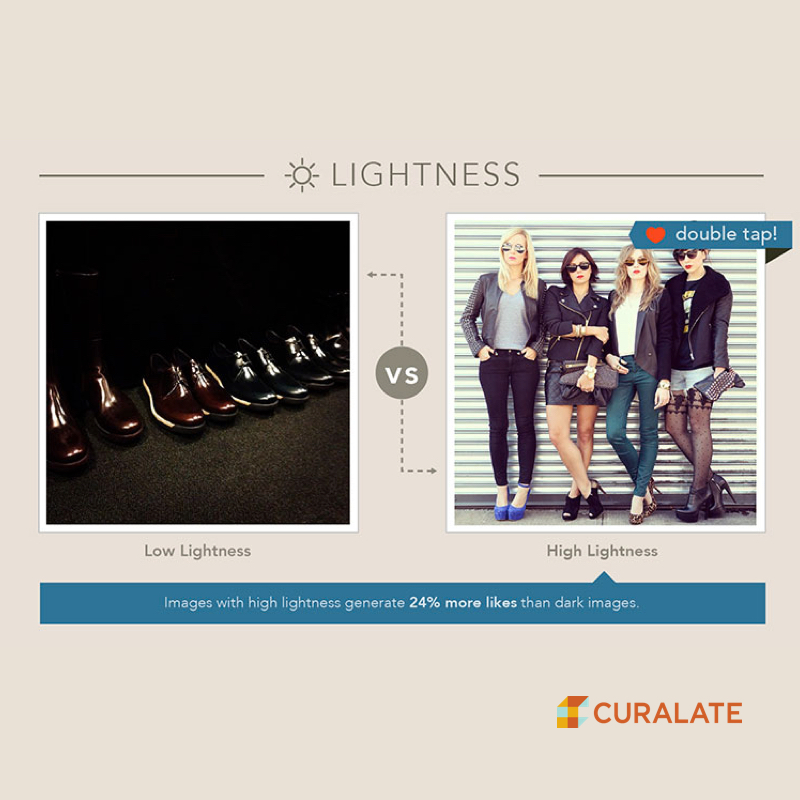
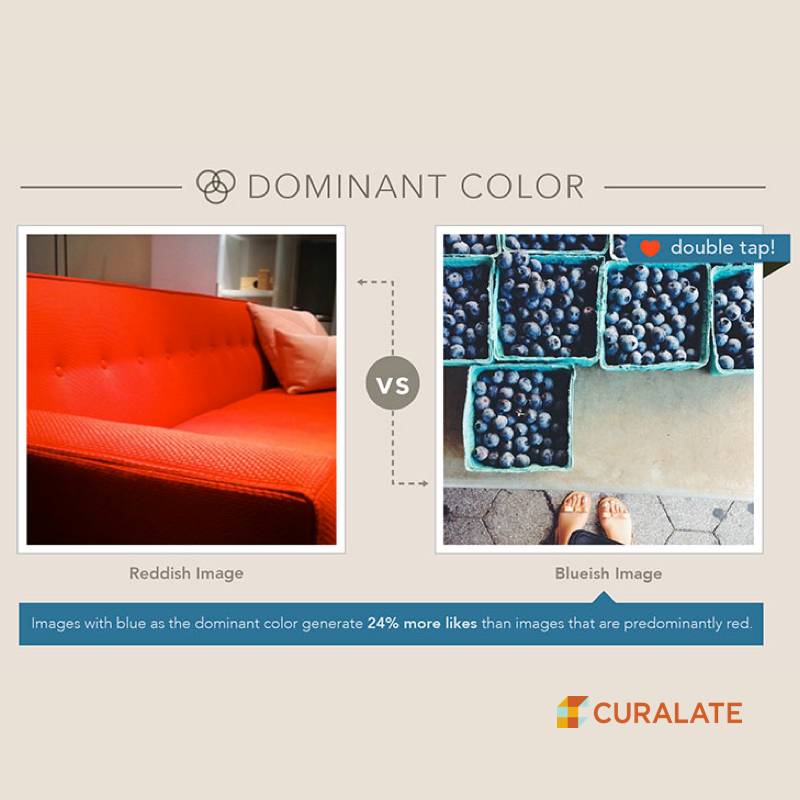

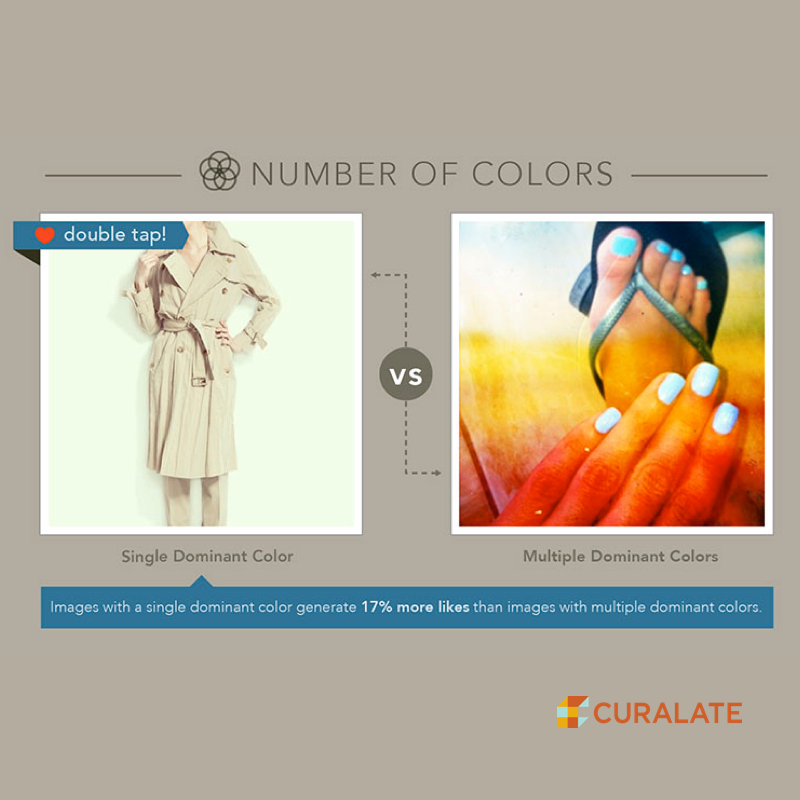


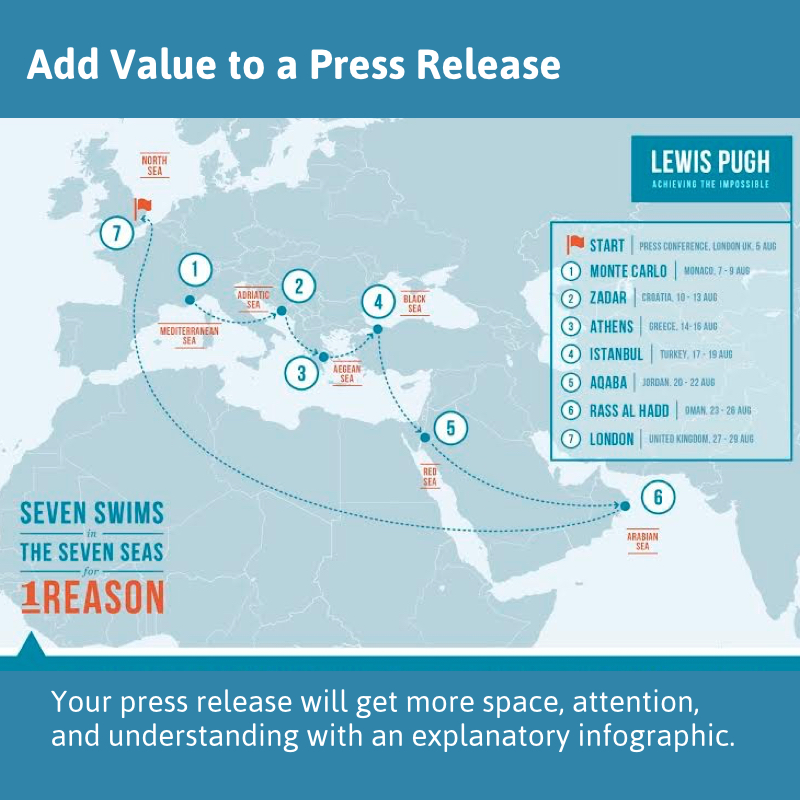
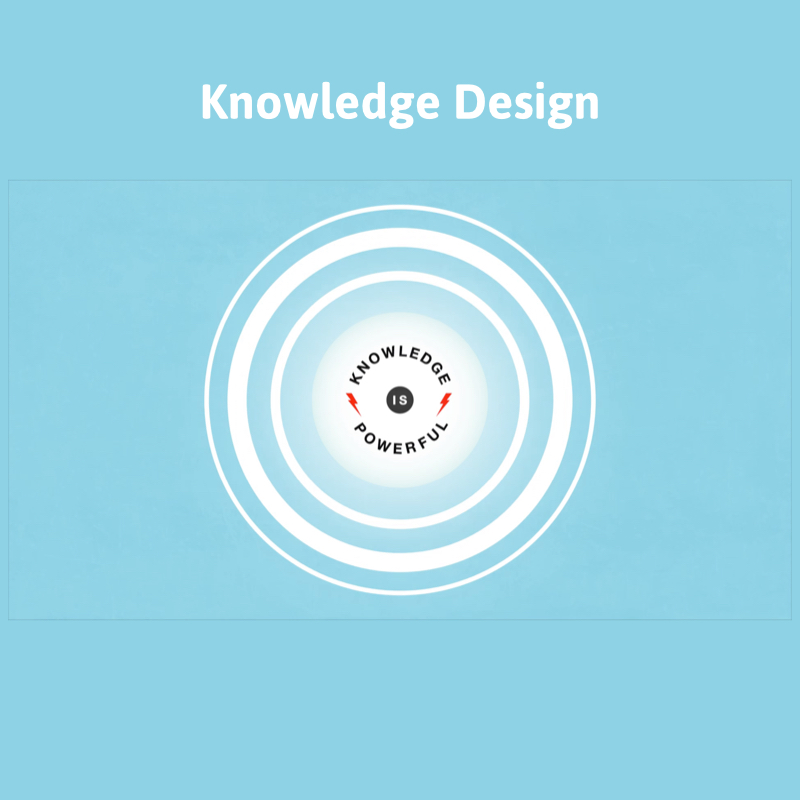



















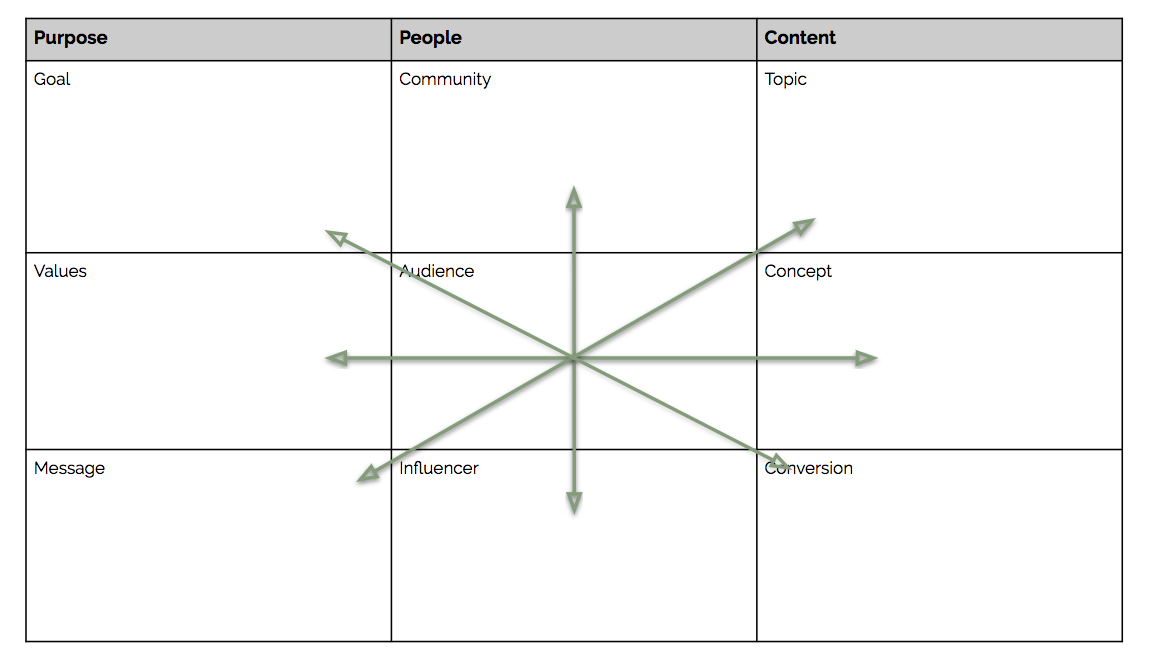








Learn to launch a spectacularly successful social media campaign.